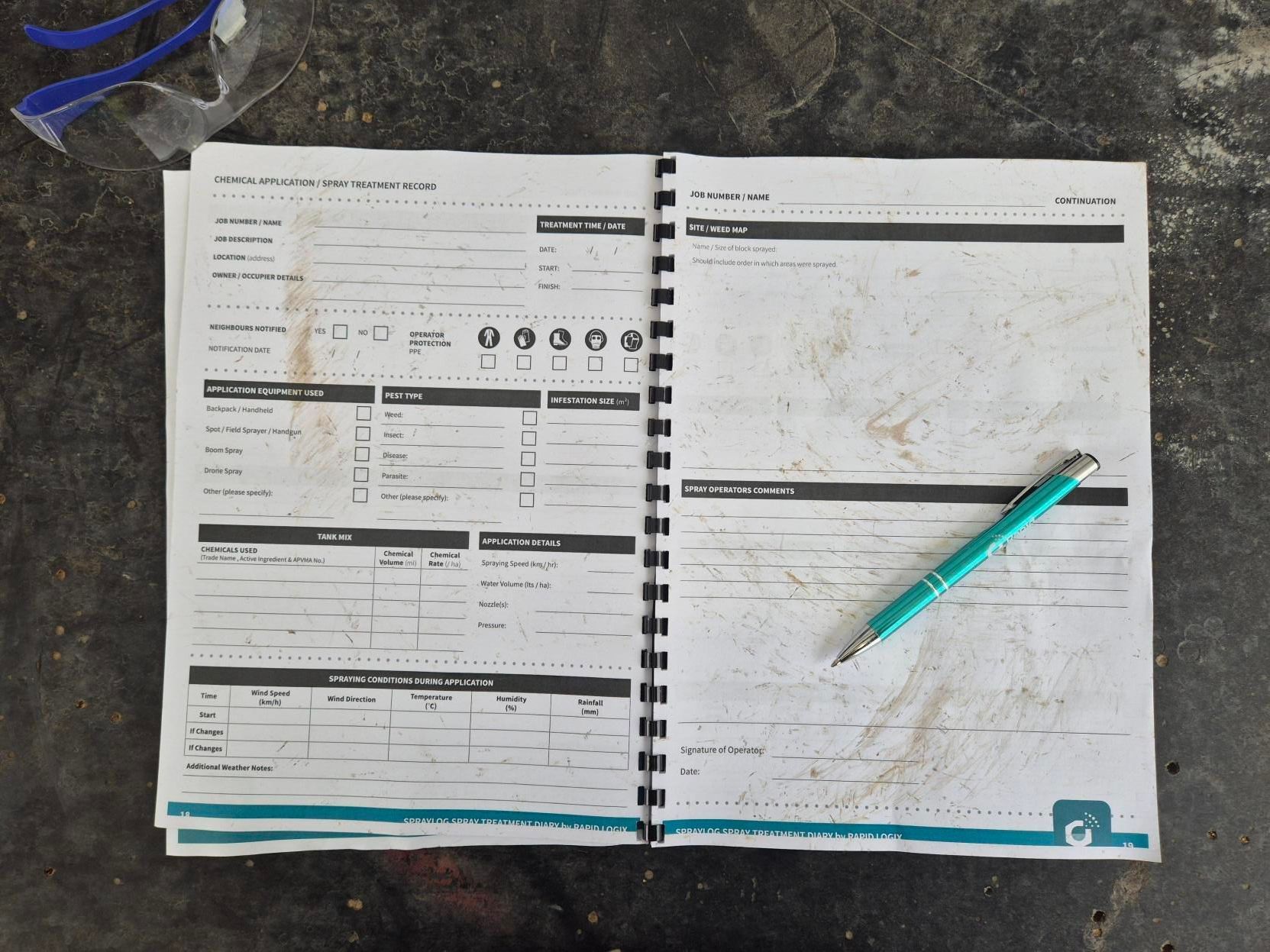Mastering Chemical Spray Records: A Complete Guide for Compliance and Safety
Maintaining detailed chemical spray records is not just a regulatory obligation for spray contractors and county councils across Australia—it’s crucial for safety, compliance, and environmental protection. Accurate record-keeping ensures that all applications are properly documented, reducing the risk of errors, liability, or environmental harm.

Key Elements of a Chemical Spray Record
To maintain a compliant spray log book, it's essential to include the following key components:
- Product Details: Record the name, active ingredients, batch number, and expiry date of the chemical product, as well as permit details if required.
- Application Information: This includes the date, time, and exact location (such as property details or GPS coordinates), target pest or the reason for application, application rate, and equipment used.
- Weather Conditions: Wind speed, direction, temperature, and humidity at the time of spraying should be noted for safety and compliance.
- Personnel Information: The name of the applicator and supervisor overseeing the operation must be logged.
For further information on how to fill out your pesticide application record correctly, visit the
NSW Department of Primary Industries guide.
Free Spray Treatment Diary
Ensure compliance with agricultural chemical spraying laws by accurately recording spray details.
Understanding State-Specific Regulations
Although the core elements of a chemical spray diary are similar across Australia, state regulations can differ slightly. In New South Wales, for instance, pesticide record-keeping is compulsory, and you can find more details about this requirement on the
NSW EPA website.
In Queensland, guidelines and record-keeping obligations are slightly different. For more information, check out the
Queensland Government's chemical use and record-keeping page.
Best Practices for Maintaining a Spray Log Book
Proper chemical spray record-keeping ensures not only regulatory compliance but also a streamlined workflow. Here are some practical tips for efficient record maintenance:
- Consistency: Use a standardized format for your spray diary to make records clear and easy to analyze.
- Accuracy: Double-check all entries, especially product details, application rates, and weather conditions, to avoid errors.
- Timeliness: Document information immediately after each application to ensure accuracy and avoid forgetting important details.
- Organization: Store chemical spray records in a secure and accessible location for easy retrieval.
- Retention: Be sure to keep records for the required period as dictated by local laws.

Modern Solutions for Chemical Spray Records
There are several methods to maintain your chemical spray log book, ranging from traditional paper records to advanced digital systems:
- Paper-Based Records: Though simple, this method can be time-consuming and more prone to errors.
- Spreadsheets: Offer flexibility, but still require manual input and proper organization.
- Dedicated Software: Specialized software can automate tasks like data analysis and streamline the entry process.
- Mobile Apps: Apps designed for chemical spray records offer GPS integration and cloud storage, making it easy to keep accurate records on the go.

Tips for Effective Chemical Spray Log Book Management
- Use a Digital Solution: Consider using dedicated software, an automatic spray tracker, or mobile apps to automate data entry and reduce errors. These tools often provide features like cloud storage and easy access to your spray records from any location.
- Train Your Team: Make sure everyone involved in chemical spraying is trained in proper record-keeping practices. This ensures accuracy and consistency across all entries.
- Regularly Review Records: Periodically go through your chemical spray records to identify patterns, trends, or areas that could benefit from improvement.
- Keep Records Accessible: Ensure all chemical spray logs are stored in a secure, but easily accessible location for audits, inspections, or emergencies.
- Consider GPS Integration: Using a GPS-enabled device can help you accurately log the location of each spray application.
- Implement a Quality Assurance Program: A well-structured QA program helps ensure the accuracy and reliability of your chemical spray diary.
Download a Free Template for Chemical Spray Records
To streamline your record-keeping process, consider using a chemical spray records sheet. A pre-formatted template is available for download, designed to make your documentation process simpler and more efficient.
By following these guidelines and utilizing modern tools, you can easily maintain accurate, compliant chemical spray records. This will not only ensure legal compliance but also help improve the efficiency of your spraying operations and protect the environment.
Free Spray Treatment Diary
Ensure compliance with agricultural chemical spraying laws by accurately recording spray details.
CONTACT US
Contact us to learn more about the Universal Flow Tracker, request a quote or give us a call on the number below.
ALL RIGHTS RESERVED | RAPID LOGIX | A RAPID SPRAY AFFLIATED COMPANY




